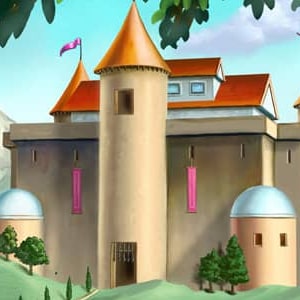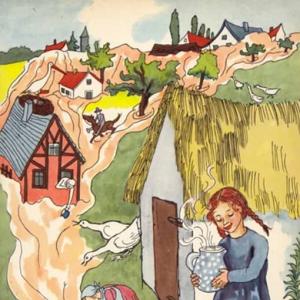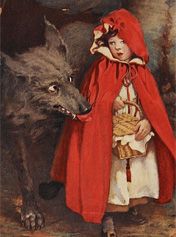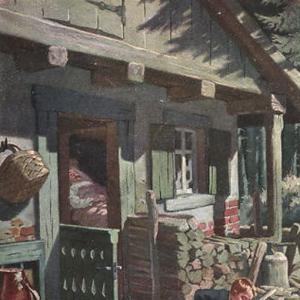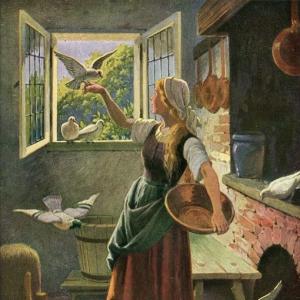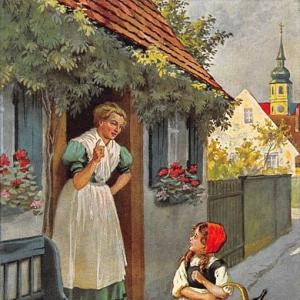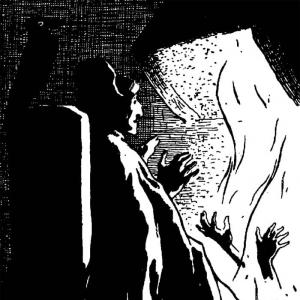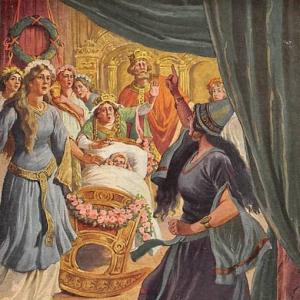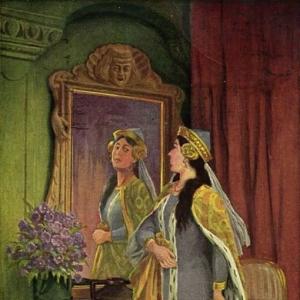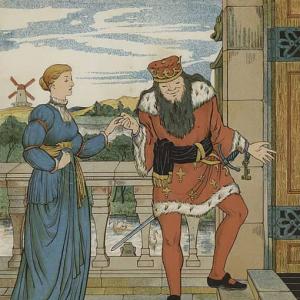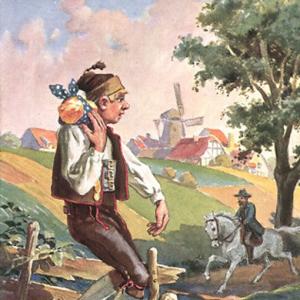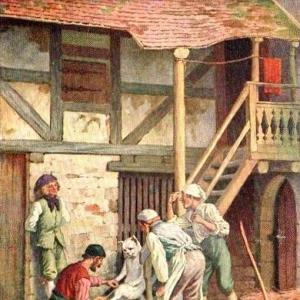Reading time: 3 min
Between Werrel and Soist there lived a man whose name was Knoist, and he had three sons. One was blind, the other lame, and the third stark-naked. Once on a time they went into a field, and there they saw a hare. The blind one shot it, the lame one caught it, the naked one put it in his pocket. Then they came to a mighty big lake, on which there were three boats, one sailed, one sank, the third had no bottom to it. They all three got into the one with no bottom to it. Then they came to a mighty big forest in which there was a mighty big tree. In the tree was a mighty big chapel in the chapel was a sexton made of beech-wood and a box-wood parson, who dealt out holy-water with cudgels.
„How truly happy is that one
Who can from holy water run!“
 Learn languages. Double-tap on a word.Learn languages in context with Childstories.org and Deepl.com.
Learn languages. Double-tap on a word.Learn languages in context with Childstories.org and Deepl.com.Backgrounds
Interpretations
Adaptions
Summary
Linguistics
„Knoist and His Three Sons“ is a short and peculiar fairy tale collected and published by the Brothers Grimm, Jacob (1785-1863) and Wilhelm Grimm (1786-1859). The Brothers Grimm were German linguists, cultural researchers, and authors who collected and published folklore during the early 19th century. They are best known for their collection of fairy tales titled „Kinder- und Hausmärchen“ (Children’s and Household Tales), first published in 1812. The collection has been translated into numerous languages and remains one of the most popular collections of fairy tales worldwide.
The fairy tale „Knoist and His Three Sons“ is part of this collection and appears in later editions, including the seventh and final edition published in 1857. The story takes place in a fantastical world between the towns of Werrel and Soist, and it stands out due to its brevity, absurdity, and open-ended moral lesson.
The Brothers Grimm collected their stories from various sources, including oral traditions, friends, and acquaintances. Many of these tales had their roots in European folklore, myths, and legends, which were passed down through generations before being recorded by the Grimm brothers. It is unclear where exactly „Knoist and His Three Sons“ originated or what specific cultural context it might have been influenced by, as its background is not as well-documented as some of the more famous tales in their collection. However, the story’s uniqueness and peculiar nature provide readers with a distinctive experience and an opportunity to explore multiple interpretations of its themes and moral lessons.
„Knoist and His Three Sons“ is a short and peculiar fairy tale, offering various interpretations based on its strange events and characters. Here are a few possible interpretations:
Overcoming limitations through teamwork: The story shows how Knoist’s three sons, each with their unique disabilities, manage to achieve their goals by working together. This could be interpreted as the power of collaboration and the importance of relying on one another to overcome individual limitations.
Embracing unconventional solutions: The tale includes several instances where the characters opt for peculiar or unconventional approaches, such as choosing the boat with no bottom or the sons achieving the seemingly impossible tasks. This could be interpreted as a lesson to think outside the box and not be restricted by conventional wisdom.
The ambiguity of happiness: The closing couplet, „How truly happy is that one / Who can from holy water run!“ can be interpreted in multiple ways. It could suggest that true happiness is found by avoiding religious dogma or escaping the control of authoritative figures. Alternatively, it might imply that happiness is elusive and depends on one’s ability to navigate life’s challenges, much like the three brothers‘ journey.
Acceptance of individuality: Each of Knoist’s sons has a distinct trait that could be seen as a disadvantage. However, these peculiarities contribute to their success in various tasks throughout the story. This could be a reminder to embrace one’s individuality and not to judge others based on their appearances or abilities.
Satirical take on societal norms: The story’s odd situations and characters could also be seen as a satirical take on traditional values and societal norms, with the Brothers Grimm poking fun at the conventional wisdom and encouraging readers to question preconceived notions.
Overall, „Knoist and His Three Sons“ offers multiple layers of interpretation, inviting readers to reflect on themes of teamwork, individuality, unconventional problem-solving, and the pursuit of happiness.
„Knoist and his Three Sons“ is a lesser-known fairy tale from the Brothers Grimm collection and has not been adapted as frequently as some of their more popular tales. However, there have been a few adaptations of the story in various forms of media. Here are some notable examples.
Theater: In 1980, the German playwright Tankred Dorst wrote a play called „Knoist and His Sons“ that was loosely based on the Grimm tale. The play explores themes of family loyalty, aging, and death.
Television: The story has been adapted for television in several different languages, including a 1979 Polish television adaptation called „Knoyst i Jego Trzej Synowie“ and a 1997 Russian adaptation called „Knoyst i ego tri syna.“
Literature: In 2012, children’s author Eric A. Kimmel published a retelling of the story called „Knoist and His Three Sons: A Tale from Grimm.“ The book features illustrations by Leonard Everett Fisher and is aimed at younger readers.
Audio: The story has also been adapted as an audiobook, including a 2008 recording of the tale by Jim Weiss, a storyteller and founder of the audio publishing company Greathall Productions.
Overall, while „Knoist and his Three Sons“ is not as well-known as some of the other Grimm tales, there have been a few adaptations of the story in various forms of media.
„Knoist and His Three Sons“ is a short fairy tale by the Brothers Grimm, set in a fantastical world between the towns of Werrel and Soist. The story revolves around a man named Knoist and his three peculiar sons – one blind, one lame, and one stark-naked.
The tale begins with the three sons venturing into a field where they spot a hare. Despite their individual disabilities, the blind son manages to shoot the hare, the lame one catches it, and the naked one stores it in his pocket. This feat demonstrates their remarkable ability to work together and overcome their limitations.
Next, the three brothers approach a vast lake with three boats – one that sails, one that sinks, and one with no bottom. Rather than choosing the functional boat, they all board the one without a bottom, showcasing their unique way of solving problems.
As the story unfolds, they reach a massive forest and discover an enormous tree. Inside the tree, they find a chapel where a sexton made of beech-wood and a box-wood parson are distributing holy water using cudgels. The tale ends with an ambiguous moral conveyed through a couplet:
„How truly happy is that one
Who can from holy water run!“
While the moral of the story is open to interpretation, the narrative highlights the importance of working together, embracing unique qualities, and finding unconventional solutions to problems.
The fairy tale „Knoist and his Three Sons“ by the Brothers Grimm is a classic example of their storytelling technique, characterized by its brevity, surreal events, and use of paradoxical and nonsensical elements. Linguistic analysis of this tale can unravel some of the layers of meaning and themes often embedded in fairy tales.
Structure and Style: The story exhibits a minimalist narrative style, typical of oral storytelling traditions. It’s structured in a simple, linear progression with a clear sequence of events. The use of repetitive and formulaic language—such as „mighty big“—serves to emphasize the fantastical elements and engrain the tale in the listener’s memory.
Characters and Paradox: The characters are defined by a single characteristic or condition: blindness, lameness, and nakedness. These descriptors set up expectations that are immediately subverted, creating a sense of paradox. For instance, the blind son shoots the hare, the lame son catches it, and the naked son pockets it, challenging conventional ideas about ability and disability.
Surreal Elements: The surrealism of the tale is heightened by impossible scenarios and imagery, such as shooting a hare by a blind man or sailing in a boat without a bottom. This use of absurdity and dream-like logic is characteristic of many Grimm tales and serves to engage the imagination.
Symbolism and Themes
Inversion of Reality: The tale constantly inverts expectations, such as having contradictory images like a „mighty big tree“ housing a „mighty big chapel. “ This could symbolize a world where traditional rules do not apply, encouraging a suspension of disbelief.
Religious Imagery: The presence of a chapel, sexton, and parson introduces religious connotations. The parson made of box-wood and the sexton of beech-wood might suggest a critique or parody of religious institutions, presenting them as lifeless or wooden.
Holy Water and Cudgels: The idea of ‚dealing out holy water with cudgels‘ mixes sacred rituals with violence, hinting at an underlying commentary on religious practices or suggesting that salvation is challenging or elusive.
Rhyme and Moral: The rhyme at the end—“How truly happy is that one / Who can from holy water run!“—echoes the moralistic and didactic nature of fairy tales, though here it is ambiguous. It suggests that the truly fortunate are those who avoid hypocrisy or false sanctity, consistent with the paradoxical events throughout the story.
Overall, „Knoist and his Three Sons“ uses linguistic elements to craft a tale rich with absurdity and hidden critiques. It ultimately invites readers to reflect on reality’s inconsistencies and question societal norms, a typical function of fairy tales designed to entertain and provoke thought simultaneously.
Information for scientific analysis
Fairy tale statistics | Value |
|---|---|
| Number | KHM 138 |
| Aarne-Thompson-Uther-Index | ATU Typ 1965 |
| Translations | DE, EN, DA, ES, FR, PT, IT, JA, NL, PL, RU, TR, VI |
| Readability Index by Björnsson | 18.6 |
| Flesch-Reading-Ease Index | 92.2 |
| Flesch–Kincaid Grade-Level | 4.7 |
| Gunning Fog Index | 6.9 |
| Coleman–Liau Index | 5.9 |
| SMOG Index | 3.3 |
| Automated Readability Index | 4.6 |
| Character Count | 760 |
| Letter Count | 574 |
| Sentence Count | 9 |
| Word Count | 156 |
| Average Words per Sentence | 17,33 |
| Words with more than 6 letters | 2 |
| Percentage of long words | 1.3% |
| Number of Syllables | 179 |
| Average Syllables per Word | 1,15 |
| Words with three Syllables | 0 |
| Percentage Words with three Syllables | 0% |
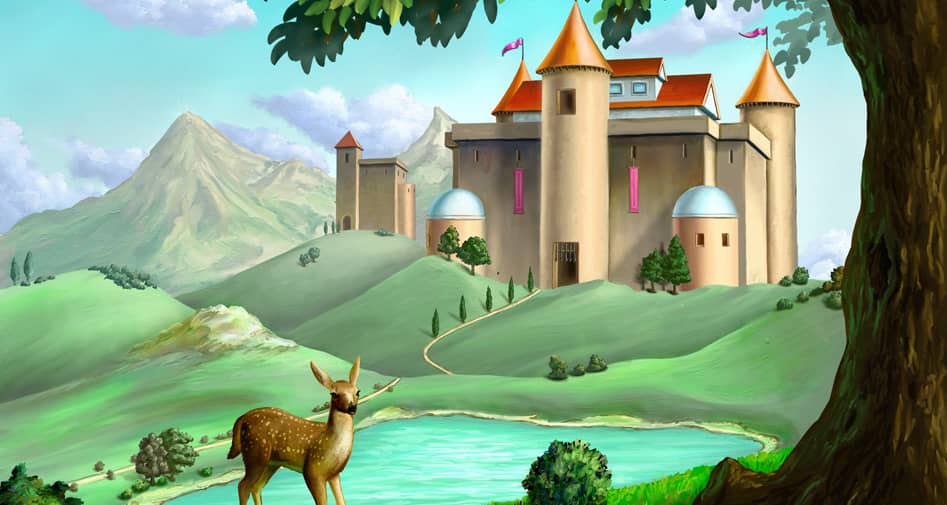
 Facebook
Facebook  Whatsapp
Whatsapp  Messenger
Messenger  Telegram
Telegram Reddit
Reddit
